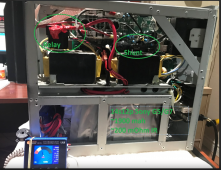Zilacon
New Member
- Joined
- Jul 2, 2021
- Messages
- 4
I have many APC units that are old, have used them for 8 years and replaced the batteries 4 times.
Sick of replacing SLA batteries i chose to buy new APC units with a set of new LifePO4 batteries as replacements.
I read a bunch of articles, watched a lot of your videos, and others videos on placing lithium batteries into UPS units and them working.
But my experience has not worked out. 2 12v 10ah batteries in series should give 240wh yet it cant run a 35w lamp for over 2 hours, when the math should be atleast 6 hours runtime. Trying twice but charging for 48 hours, got the same results. I bought a different brand of batteries to test and got the same results.
Both battery packs in both ups units were at 26.5v or 13.25v per battery.
Any idea whats going on? Or is there a better consumer grade UPS i can get that had better support for Lifepo?
Thanks
Sick of replacing SLA batteries i chose to buy new APC units with a set of new LifePO4 batteries as replacements.
I read a bunch of articles, watched a lot of your videos, and others videos on placing lithium batteries into UPS units and them working.
But my experience has not worked out. 2 12v 10ah batteries in series should give 240wh yet it cant run a 35w lamp for over 2 hours, when the math should be atleast 6 hours runtime. Trying twice but charging for 48 hours, got the same results. I bought a different brand of batteries to test and got the same results.
Both battery packs in both ups units were at 26.5v or 13.25v per battery.
Any idea whats going on? Or is there a better consumer grade UPS i can get that had better support for Lifepo?
Thanks





